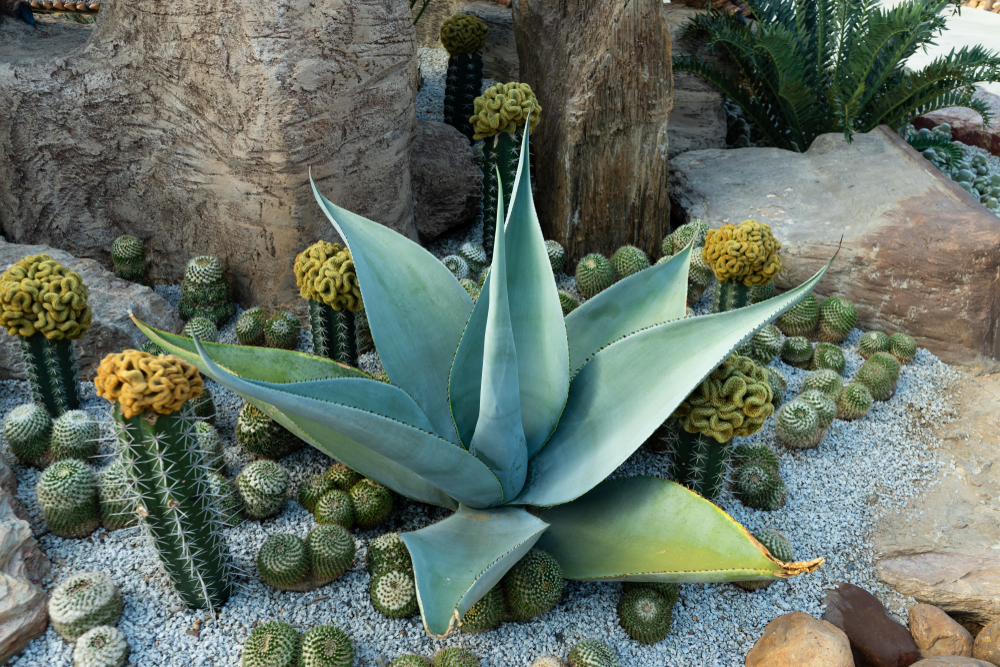
5 Plants that are Perfect for Landscaping in Las Vegas
Las Vegas is situated in the Mojave Desert basin surrounded by mountain ranges. The mountains create a barrier that inhibits moisture. Thus, “Sin City” generally only receives approximately four inches of rain annually. Along with low moisture and humidity, the area also experiences extremes in temperatures. During mid-summer, it is not unusual for daytime temperatures to exceed 100 degrees Fahrenheit. Although the arid climate creates a challenge for developing and maintaining landscaping in Las Vegas, there are plant species that thrive here.
Cacti Species Remain a Popular Choice
Business and homeowners commonly incorporate various cacti species when landscaping Las Vegas properties. The desert-loving plants require little to no maintenance and commonly produce colorful flowers. Various cacti species appropriate for the area include:
• Barrel cactus. They grow up to five feet in height as seen in the compass and fishhook species. Golden barrel cacti tend to encompass areas spanning two-feet square.
• Cholla species. These include the Buckhorn, the Devil and the Teddy Bear cactus that reach heights of up to six feet and produce flowers ranging from yellow to red.
• Prickly Pear cactus. Also known as the paddle cactus, they are available in a range of shapes and sizes. The pads and fruit produced are edible while producing decorative red to yellow flowers.
The plants thrive in sandy or rocky soil, which offers sufficient drainage. Planting young cactus requires creating a hole up to six inches wider than the container and a few inches deeper. Fill the cavity with water to ensure the moisture disappears within a couple of hours. Otherwise, the hole must be deeper. Or, add more sand or a cactus mix. Larger plants naturally require deeper holes for increased stability.
With gloved hands, lift the plant from the container and dust the roots with charcoal or soil sulfur to prevent root rot. Place the cactus into the cavity, surround it with soil and water thoroughly.
Consider Texas Sage
Commonly planted Texas sage species include:
• Green cloud. It has green leaves and dark pink to magenta flowers.
• Silverado. Its varieties have silver leaves and fuchsia blooms.
• Compact sage plants. They grow up to three feet in height and width and have silver leaves and hot pink flowers.
• Desperado plants. When mature, they grow to five feet in height and width while producing silver/green leaves and pink/lavender flowers.
• Lynn’s Legacy. These shrubs feature thick, green foliage and an abundance of blooms.
The beautiful blooms and ease of care make Texas sage another popular choice to landscape Las Vegas properties. Depending on the Texas sage species, the shrubs grow to heights and widths of up to six feet. The hardy, decorative bush-like plants love full sunlight and hot temperatures. But they capably also withstand temperatures as low as 10 degrees Fahrenheit. Blooms appear year-round but are especially prolific during the monsoon season.
Plant young shrubs during the fall or spring in locations receiving direct sunlight or reflected heat. Like cactus, make sure the chosen spot has well-draining soil to prevent root rot. Make terrain improvements as needed before planting. Water the shrubs every two or three weeks during the summer months. In winter, their watering needs are reduced to once a month.
Explore Honeysuckle Varieties
Although there are reportedly up to 200 varieties of honeysuckle plants, 20 are found in North America. The heat-tolerant plants grow as bushes, shrubs or vines. Commonly known honeysuckle varieties include:
• Desert honeysuckle. It produces reddish/orange tubular blooms from early summer to fall.
• Mexican honeysuckle. It has light green foliage and brilliant orange blooms.
• Trumpet honeysuckle. This is a vine that produces pink to red blooms from spring to fall.
• White limestone or Texas honeysuckle. A shrub that prefers full sunlight and produces clusters of white flowers.
Honeysuckle plants are prized for their unique tubular blooms that emit sweet scents. The nectar found within the blooms also regularly attracts hummingbirds and other wildlife. Young honeysuckle varieties are planted during spring when frost is no longer present. They prefer sunny spots in moist soil that drains well. Climbing species require some type of structure for support as they grow and mature. Common options include a fence, pole or trellis. Position young plants approximately one foot from the supporting structure.
Water is needed to maintain damp, but not soggy, soil. Add compost during the spring. Prune any time of year as desired to maintain the size and shape of the bush or shrub.
Landscape Las Vegas Properties Using Trees
There are unique tree species that grow and thrive in desert climate locations. All are low-maintenance with reduced watering needs. The tree varieties include:
• Italian cypress. These trees are low-maintenance evergreens that grow to heights ranging from 60 to 80 feet and a mere three to four feet in width. Thus, they are chosen to create borders.
• Raywood ash. These trees mature to 40 feet in height with foliage that spans up to 30 feet in width, which makes them ideal when desiring a shady spot. Though green in the spring and summer, the leaves transform to purple in the fall.
• Wichita Blue juniper. These trees are ornamental and evergreen-like. They mature to heights of up to 20 feet and widths of up to eight feet, which makes them ideal as privacy borders.
Plant Decorative Ground Covers
Ground-cover plants need less water than traditional lawns and do not require mowing. Las Vegas yards having ground cover varieties reduce weed growth and the presence of pests. Various drought-resistant species are available that grow and spread quickly to fill in spaces. Plants that enjoy the desert heat include:
• Amethyst in snow
• Blue catmint
• Carpet sedum
• Creeping thyme
Share this post!